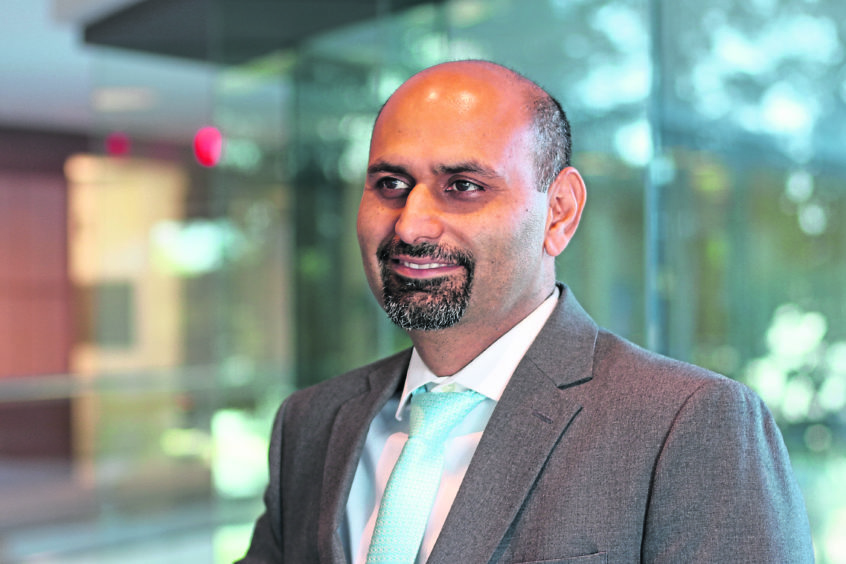
The US Gulf of Mexico is in the midst of a “big year” of mergers and acquisitions, a top analyst has said.
Imran Khan, a senior research manager at Wood Mackenzie in Houston, said the region remained a “buyer’s market” and that “quality assets” had been put up for sale.
Mr Khan, who focuses on upstream oil and gas operations in the US GoM, said the region had a “good mix” of companies looking to buy and sell.
In the UK North Sea, the general trend has been for private equity (PE) backed newcomers to buy ageing assets from international oil companies.
However, in the US GoM, smaller PE-backed firms are also among those looking to sell, as are the bigger, more established players.
Oil price volatility got in the way of a few “handshakes” at the turn of the year, but momentum is starting to pick up, said Mr Khan.
Some deals would have been close to completion when the drop in crude prices at the end of 2018 “shook the confidence” of a lot of buyers and widened the valuation gap with sellers.
However, crude prices stabilised in the first quarter, and rose when the US said it would scrap waivers for the customers of sanctions-hit Iran.
The US GoM is now making headlines, as the deals expected several months ago start to come through.
Israel-headquartered Delek Group clinched a deal to buy 22.45% of the Caesar-Tonga asset from Shell for $965 million.
California-headquartered Chevron announced the purchase of Anadarko for $50 billion, though Occidental has emerged as a challenger, lodging a bid of its own.
While Anadarko’s Permian acreage is the main prize, the company is a major player in the deepwater GoM, and is developing an LNG mega-project on Mozambique.
And Murphy Oil has agreed to pay up to $1.6bn for a package of deepwater GoM interests from Llog Exploration. Most of the stakes are owned by Llog Bluewater, a joint venture between Llog Exploration and PE funding from Blackstone.
“The transaction is part of Murphy’s aggressive plan to expand its footprint in the Gulf of Mexico,” Mr Khan said.
“The company has a large war chest after disposing of over $2bn in Malaysian assets earlier this year. Murphy also acquired a majority of Petrobras’s Gulf of Mexico portfolio last year, on top of starting a robust exploration and appraisal campaign.
“With this transaction, Murphy becomes the eighth-highest producer in the Gulf of Mexico. Only a year ago, they were number 20.”
Mr Khan added: “The Gulf of Mexico remains a buyer’s market with the valuation of recent deals trading at 20-30% lower than our estimates. We forecast a big year for M&A in the Gulf of Mexico, and the momentum is starting to pick up. This is the second billion-dollar transaction within the last two weeks. We expect more to come as buyers are attracted to short payback periods, while sellers shed fringe assets and some private equity players look to harvest their old investments.”
And while some PE money appears likely to exit, some could “rotate” back in. Beacon Offshore Energy, formed in 2016 with substantial capital from Blackstone, has openly stated its intention to make deals happen.
Mr Khan said optimism and enthusiasm are in better supply throughout the US GoM compared to a year ago, as indicated by the most recent lease sale, with high bids totalling $244.3m, an increase of 37% on the previous round.
Oil price volatility remains, but companies and investors are confident prices are not going to drop to the lows seen in 2014-16, he said.
Mr Khan believes operators are “getting over the hump” and that big projects are coming through.
A final investment decision on Chevron’s Anchor project, which would be the world’s first ultra-high pressure (UHP) development, is keenly anticipated.
Mr Khan said: “UHP is progressing faster than expected. There is confidence technology is going to get over the line and multi-billion dollar projects will get sanctioned. The UHP challenge has always been about how to complete the wells.
Completion technology is being led by operators, but they are working closely with big tier one suppliers like TechnipFMC, so it’s a co-operation game.”
And tieback projects in the US GoM are increasingly able to compete for investment with Lower 48 shale, due to their low break-even costs, quick turnaround times and high productivity.
The picture is less rosy for suppliers. A degree of inflation was expected to return to the oilfield services sector, but the price drop in the fourth quarter gave operators more leverage to resist rates increases.
“It’s still a low cost-structure environment,” Mr Khan said. “Operators are not willing to give up the squeeze any time soon. For projects to compete, the price cannot shift back up. Suppliers realise that and are trying to figure out how to work best. Tiebacks still have a cushion.
“Those projects have low break-even costs, but major projects with facilities costs and rig rates where 15-20 wells are going to be drilled have less cushion. That’s where cost structure is that bit more important.”